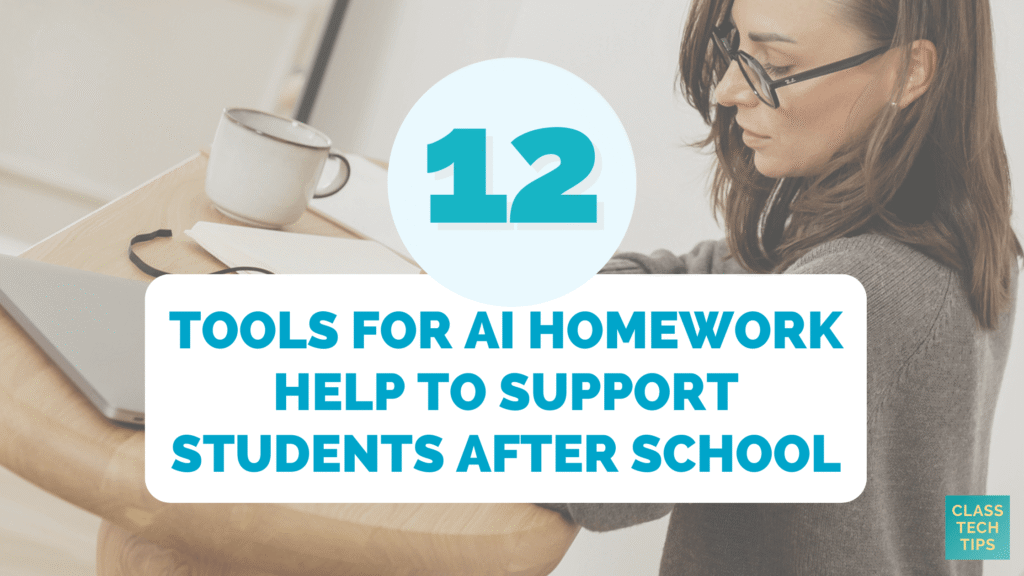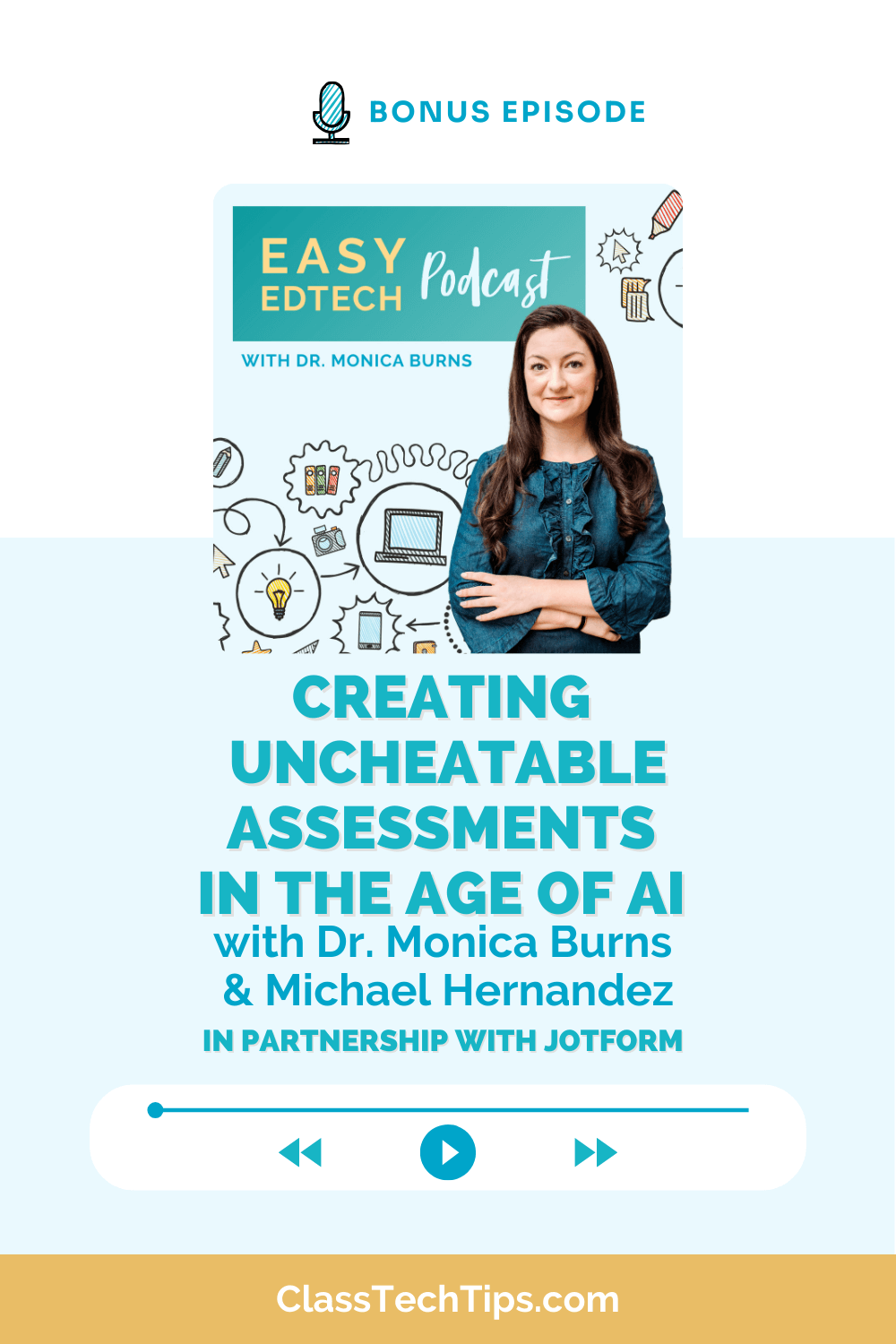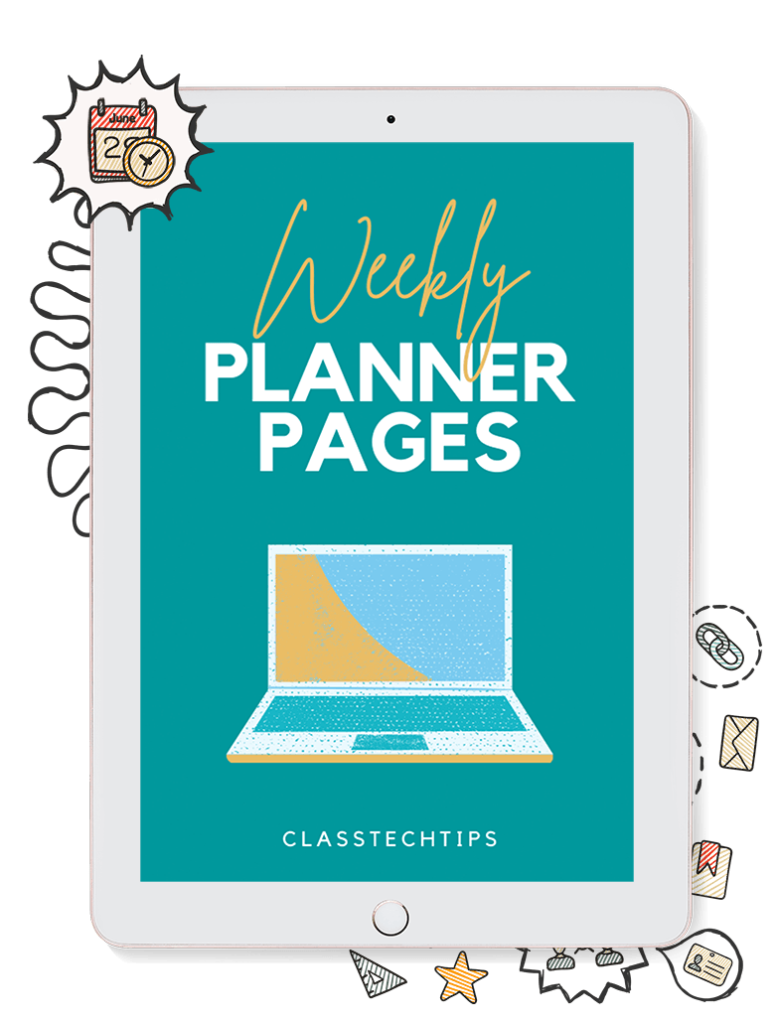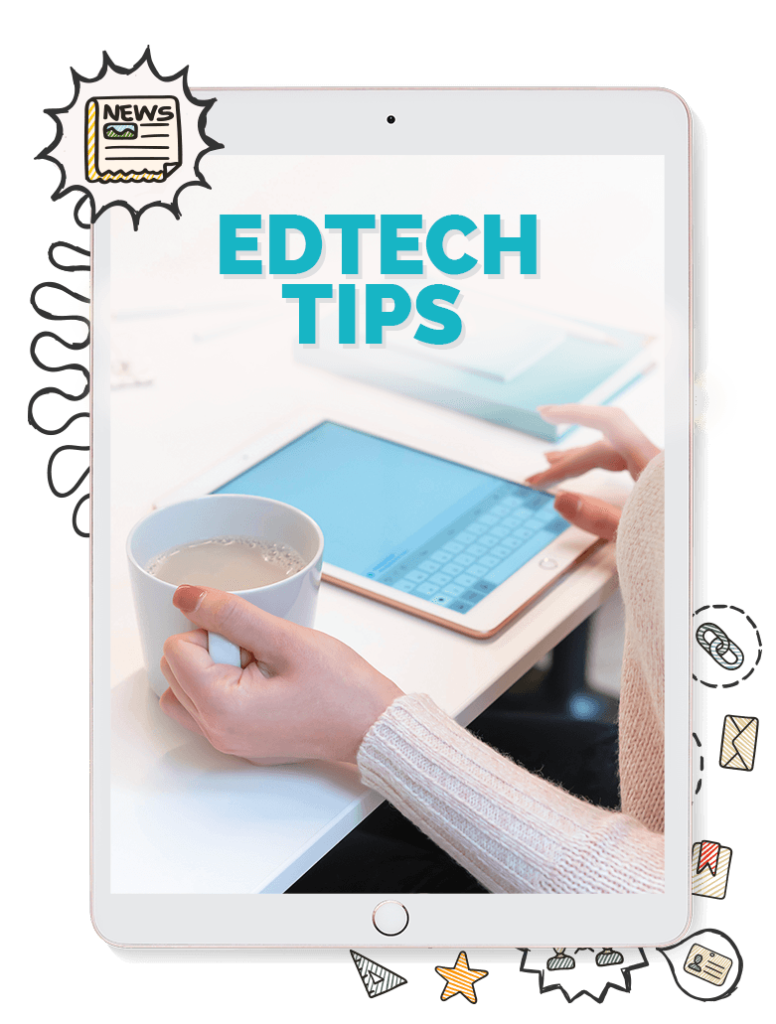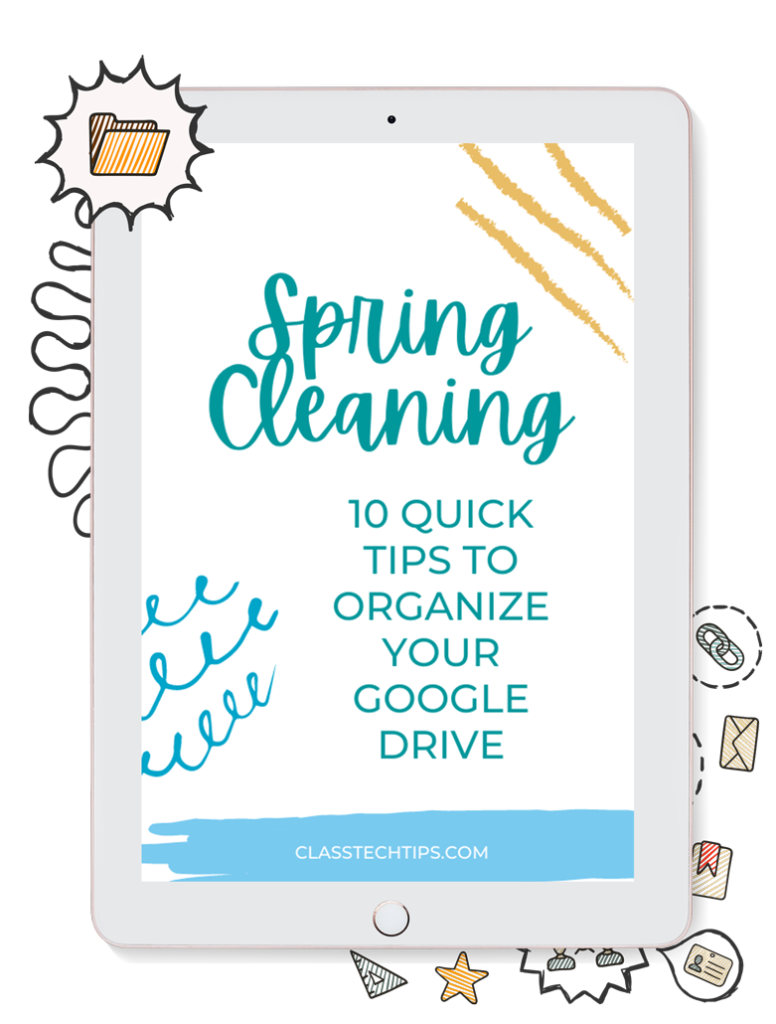Homework doesn’t have to be a frustrating experience for students or their teachers. When students are sent home with assignments, they often benefit from some extra support. Of course at different grade levels and in different content areas this will vary, so today on the blog I have a handful of customizable strategies and tools to help out.
Artificial intelligence can play a powerful role throughout the school week, particularly when teachers can leverage this technology to create supplemental resources. Using AI for homework help doesn’t mean replacing thoughtful assignments or one-on-one feedback. Instead, you can give students access to personalized scaffolds and supports they can use anytime they need a boost.
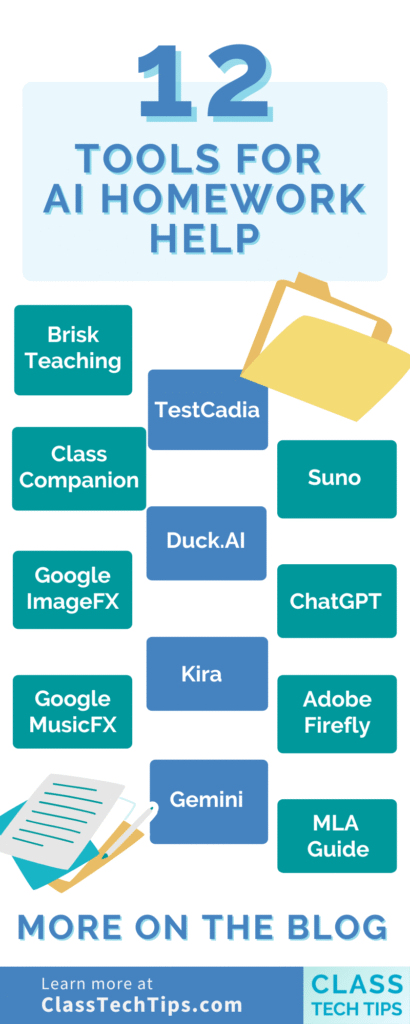
Throughout this past school year, I’ve shared ways to integrate AI into everyday routines. In this post, we’ll focus specifically on how AI can help students outside of the classroom. These strategies are all about reinforcing instruction, building student independence, and creating meaningful learning experiences.
12 Tools and Strategies for AI Homework Help
When students are working on their own afterschool, they might never interact with the AI tools on the list below. In this post, you’ll find twelve different ways to use AI for homework help that put you in the driver’s seat. You are the one who would use these tools to create meaningful learning experiences for students.
I’ve included direct links to tools I’ve written about on the blog and prompts you can try out right away. Let’s dive into twelve classroom-friendly strategies that can make afterschool assignments a bit more streamlined through AI homework help your students.
Create Review Podcasts Students Can Replay
One fun way to extend learning beyond the school day is through audio. If your students benefit from hearing content explained out loud or need extra exposure to vocabulary, try a podcast. Creating a quick podcast for them to listen to at home can make a big impact. Brisk Teaching is a tool I’ve featured on the blog that lets you generate audio content using your lesson materials. Whether you’re summarizing a chapter in a read-aloud book or reviewing key terms from a science unit, Brisk makes it easy to create and share content in a way that feels fresh and accessible.
Tool: Brisk Teaching (Free 3-month trial for a limited time)
Offer Instant Writing Feedback
Students often need feedback before they feel confident about submitting an assignment. Since teachers can’t be everywhere at once, that’s where Class Companion steps in. This AI-powered tool gives students immediate feedback on their writing. Instead of waiting until the next school day, they can submit a rough draft and get suggestions to improve their grammar, clarity, and structure. It’s a helpful tool for both homework assignments and long-term writing projects, especially when you’re aiming to foster independence and revision skills.
Tool: Class Companion (Free tool for teachers)
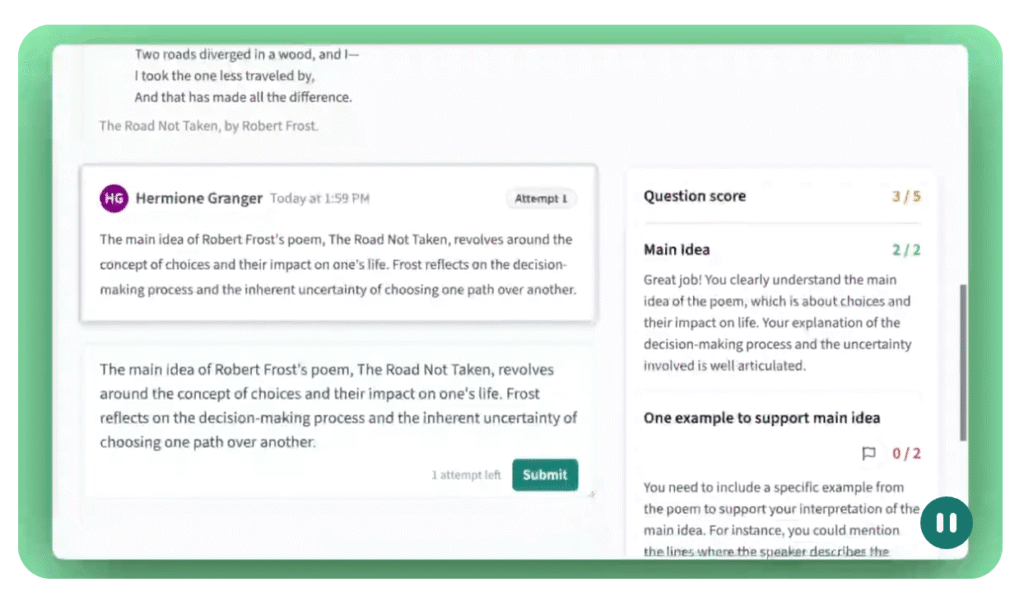
Use Google AI Tools for Content Review
Some students are visual learners, others respond better to music and rhythm. Luckily, Google has two AI tools that can help meet both needs. In this blog post, “9 AI Tools from Google Teachers Should Know About”, I spotlight ImageFX and MusicFX. ImageFX lets you create customized visuals that can help explain vocabulary, scientific processes, or historical scenes. MusicFX allows you to generate music that sets a tone or represents a topic. It’s perfect for anchoring learning with emotion and memory. These tools might help your students review content or accompany a study routine.
Tool: Google ImageFX and MusicFX (Free but may have limited access for certain Google users)
Support Test Prep with AI
Preparing for a big test can feel overwhelming to students, especially if they don’t know where to start. AI tools can help streamline this process. In my blog post on gamified test prep, I share how teachers can use AI to build personalized quizzes, interactive practice activities, and review tools that help students study. With the help of tools like TestCadia or a trusted chatbot, you can tailor your test prep materials to your students’ unique needs and give them ways to prepare with confidence.
Tool: TestCadia (Free for first 50 credits per month)

Make Review Games with a Chatbot
If your students respond well to interactive experiences, using a chatbot to create a custom review game could be the perfect fit. In this post, “8 AI Chatbots for Teachers: A Simple Guide and Quick Tips,” I introduce eight different chatbot tools worth exploring. Once you’ve chosen one that fits your needs, you can prompt it to create vocabulary games or review questions tied to your current unit. These games can serve as optional afterschool or small group activities and bring an extra layer of fun to content review.
Tool: Your Favorite AI Chatbot, perhaps DuckDuckGo AI (Free)
Build Study Guides with Kira
Kira is a powerful platform that offers a variety of tools for teachers, including the ability to generate AI-powered study guides. In this blog post, I highlight how Kira can help teachers create summaries, vocabulary lists, and content-aligned materials to share with students. These study guides are perfect for homework support because they break down complex topics into digestible pieces. They’re also customizable, so you can make sure your students are reviewing exactly what they need.
Tool: Kira (Free Trial Available)
Make a Reader’s Theater to Practice Content
Reader’s theater is one of my favorite strategies for bringing content to life. Whether you’re reviewing science content, historical events, or characters from a novel, you can use AI to generate short scripts for students to read aloud. In this blog post, “How to Make Your Own Reader’s Theater Using ChatGPT,” I share how you can create your own with a favorite chatbot like Gemini from Google. These scripts can be read during homework time with a family member, classmate, or even alone as a fluency and comprehension activity. It’s a creative way to reinforce content through performance and play.
Tool: Gemini (Free and Paid)
Create Review Songs with Suno
There’s something magical about setting learning to music. Whether you’re reinforcing vocabulary or reviewing content from a unit, turning concepts into songs can help students retain information in a fun and memorable way. In this post, “7 Ways to Use AI Music in Your Classroom,” I talk about how teachers can use Suno to generate short music clips using their own lyrics. Although this tool is designed for teachers (not students), it’s a creative way to share review materials that go beyond flashcards or worksheets.
Tool: Suno (Free with limitations)

Make Vocabulary Review Games
Vocabulary is a core component of nearly every subject area—and it’s often something students need to revisit outside of the classroom. With ChatGPT or another AI tool, you can create a quick fill-in-the-blank or matching game using the words from your current unit. In this vocabulary post, I share several ways to generate review activities using AI. These games can be shared digitally or printed out for students to complete during homework time or independent work sessions.
Tool: ChatGPT (Free and Paid)
Design a Coloring Page for Concept Review
Sometimes a little creativity goes a long way. If you’re looking for a low-stress, high-impact way to review content, try making a coloring page related to your unit. In this blog post, “How to Make Your Own Coloring Book Pages with AI,” I show how to use Adobe Firefly to generate custom pages featuring content from math, science, social studies, or ELA. These can be great for homework time—students color while thinking about key terms, processes, or scenes, making connections in a visual and relaxing way.
Tool: Adobe Firefly (Free with credits for K-12 users)
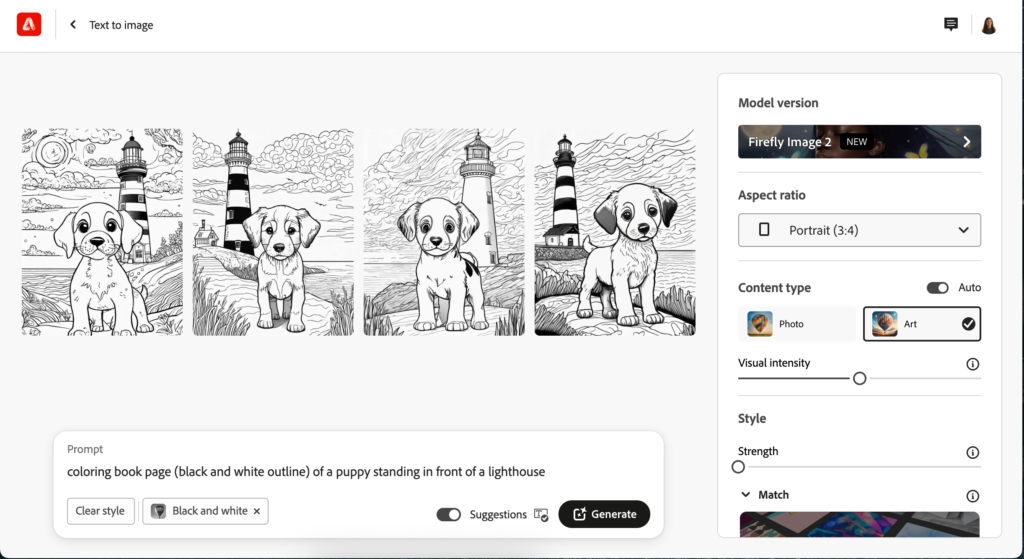
Teach Students How to Cite AI
As students start using AI tools to help with homework, it’s important they understand how to cite the content they generate. In this post, “How to Cite AI Images in the Classroom,” I walk through how to cite AI-generated images using MLA guidelines. Sharing this information with students helps build good habits and reinforces academic integrity. Even if they’re using AI for inspiration or support, they should still know how to give proper credit.
Tool: MLA Guidelines (Free Resource)
Quick Tips for AI Homework Help
AI homework help is about more than convenience. It’s about making learning more accessible, personalized, and engaging. With the right tools, teachers can extend their reach beyond the classroom. And they can help students succeed no matter where they are working. From podcasts to study guides to custom coloring pages, these resources offer multiple entry points for learners. At the same time, they can help teachers to provide support at scale.
If you’re looking for more ways to integrate AI into your teaching practice, explore the blog posts linked throughout this article. You’ll find step-by-step instructions, prompt ideas, and real classroom examples to help you get started. And check out a full page of resources related to artificial intelligence on this landing page!
